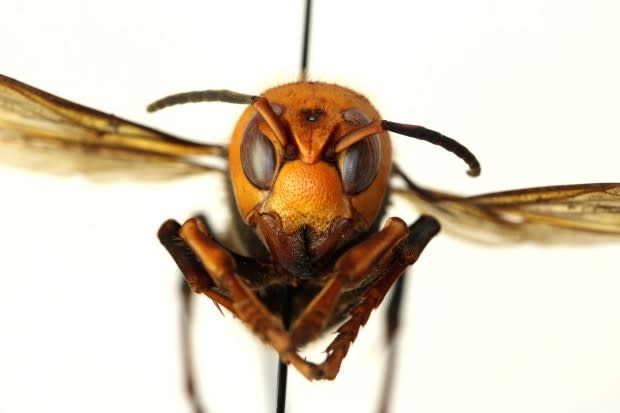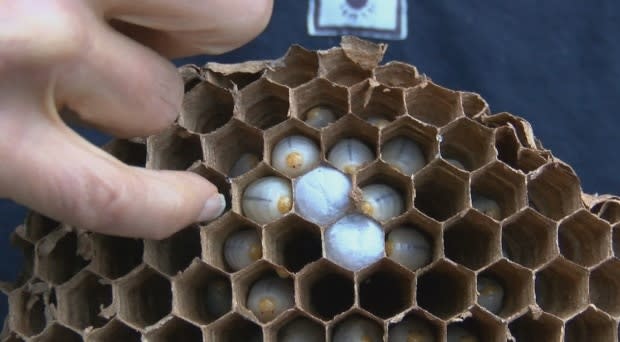What you need to know about B.C.'s so-called murder hornets
Some people are buzzing with fear over a possible encounter with Asian giant hornets, but B.C.'s top bee expert says fatalities are rare and there are ways to avoid a confrontation in the first place.
Since the first sighting of the species — sometimes called murder hornets — in Nanaimo on Vancouver Island last year, the hornets have been spotted in Metro Vancouver's White Rock, the Cowichan Valley south of Nanaimo and some parts of Washington state.
Provincial apiarist Paul van Westendorp says the hornets tend to nest on the ground in wooded areas and that's where people should be cautious.
"Hornets are [not] going to be flying in clouds around the countryside looking for victims," said van Westendorp Wednesday on CBC Radio's The Early Edition, adding that the "amateurish title" murder hornets makes him cringe.
He said the hornets, which can measure about five centimetres in length and have a wingspan the size of a small hummingbird, will likely not pursue people or pets unless a nest is disturbed.

So you disturbed a nest...
Unlike a honey bee colony which has thousands of bees, said van Westendorp, an Asian giant hornet's nest will have a few hundred dwellers inside.
If a nest is disturbed, a colony will initially send out one hornet, then more, but only if the intruder remains there.
Van Westendorp advises that if you do inadvertently disturb a nest, it is smart to run.
But, he said, do not run toward a large open space as it makes you more visible to the hornets.
Instead, van Westendorp says hide in any available cover, such as shrubbery, to make it harder for the hornets to find you.
This particular hornet has a "dagger-like stinging apparatus" said van Westendorp and can sting repeatedly without losing it. The venom they release also contains an enzyme that causes the death of body tissue, called necrosis, at the point of contact.
"Don't touch the wound after you get stung," said van Westendorp. "Rubbing the site will mobilize venom and irritate surrounding tissue."
He recommends immobilizing the area that has been stung and putting ice on it immediately to reduce swelling.

Rare fatalities
The hornet's sting has proven fatal in rare cases.
People who have been punctured by the stinger which can be up to 10 millimetres long liken the pain to a red hot pushpin being stabbed into their flesh.
In Asia, a few dozen deaths each year are attributed to the hornet, most often if a nest is disturbed, said van Westerndorp.
Despite this, van Westendorp says that dubbing it the murder hornet is sensationalizing:
"It's too much of a Hollywood image and that is not the case."
He says any sighting of an Asian giant hornet should be reported to the Invasive Species Council of B.C. at 1-888-933-3722.


